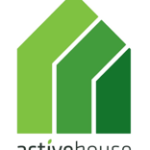S8

The planning the planning team and construction company was pre-selected through contractual obligations inherited from the former owner of the site. The initial key task was to find a route that would enable the owner to get the surplus energy buildings he desired without forcing the construction companies into solutions, obligations or liabilities beyond their experience. Not including these performance goals into the contracts and at the same time acting as consultant to the designers and buildings solved these concerns.

The ambition on energy performance was paired with the explicit vision on the future living environment, with key aspects of a melting interior-exterior boundary where rooms would expand from the inside to the outside, and where the availability of daylight with the experience of daytime and seasonal shiftings was a paramount interest.

The L-shaped footprint with rather narrow dimensions allows all rooms with a residence function (living room, kitchen/dining room, master bedroom) to be flooded with daylight from two opposing directions. The living room features a floating gallery, open to the second floor’s roof top, including north-faced skylights. The shape of the room acts as a light-chute.

Windows and sliding doors are truly floor to ceiling, two of the buildings gables are completely glazed. Overheating is prevented through integrated external venetian blinds, allowing control and protection of light and views, the massive construction shows provides energy storage and retardant capacity. The geothermal heat pump system features a natural cooling function. In total, the indoor temperature can sustainably be stabilized – this summer (with max temperatures close to 40 degrees Celsius) resulted in indoor air temperatures never above 24. Side effect of summer cooling is the reheating of the geothermal bore holes.

A mechanical ventilation system with heat recovery (>90%) is installed – however natural ventilation can be applied through openable windows in all rooms.
A KNX-based control system is installed, smart home functions however are reduced to what the users find appropriate rather than oriented at what technically would be possible.
The ambition to design and build a net zero or net surplus energy building was one of the basic design goals. The planning team and constructors involved typically build 30% below German energy requirements, their clients would not demand better. With regards to the company’s and the craftsmen’s experience, the building owner acted as energy and construction consultant, starting the overall energy concept, including selection and sometimes tendering of technical components. Refinements typically stayed within the builders’ standard solution, but increased insulation, exchanged to higher performing materials, included higher performing components. The resulting total energy demand of the building lies at 32kWh/m2a or at 1/3 of the regulatory reference building. Heating, cooling and domestic hot water is provided by a geothermal heat pump system with a COP > 5. Electricity is produced by a 8,8 kWp PV installation with a 10kWh energy storage. The expected annual energy production exceeds the buildings energy demand (including user appliances) by more than a factor 2. Surplus energy is fed to electric mobility, projected to fuel 12.000km annually. Seasonal variation is fed to or purchased from the grid.

The measures:
- increased insulation and replaced materials in the building envelope
- high-performance windows and doors at passive-house-performance levels
- heat recovery in ventilation system
- energy efficient lighting (LED)
- 8 kWp PV installation
- Geothermal heat pump system
The building owner is an LCA expert and sustainable construction consultant. For this project LCA and LCC have been conducted to identify hotspots of concern and to support and validate technology and material selections. The featured building is not an “ecohome”, but on the basis of life cycle considerations, materials have been carefully selected, but were often limited with regards to practice and experiences of the builder and craftsmen. Indoor air quality was addressed by the preselection of all relevant materials, where the DGNB assessment criteria in the highest category were applied as target. Further, regional materials were given consideration, resulting in:
- limestone and roof tiles: local north German;
- insulation: ETICS;
- windows: small manufacturer specialised in wood-aluminium passive-house windows (400km);
- stairs: small craftsman, oak/Plywood, north Bavaria (500km)
- flooring: oak parquet from sustainable sources, Germany (max 600km),
- heat pump: Sweden;
- tiles: Italy;
- kitchen: north Germany (220km).

Rain water is collected entirely and directed to an on-site percolation. Pipeworks for future completion of a rainwater supply for toilet flushing and washing machine are pre-installed. Fresh water use is reduced through reduced volume water installations (this is however rather standard)






